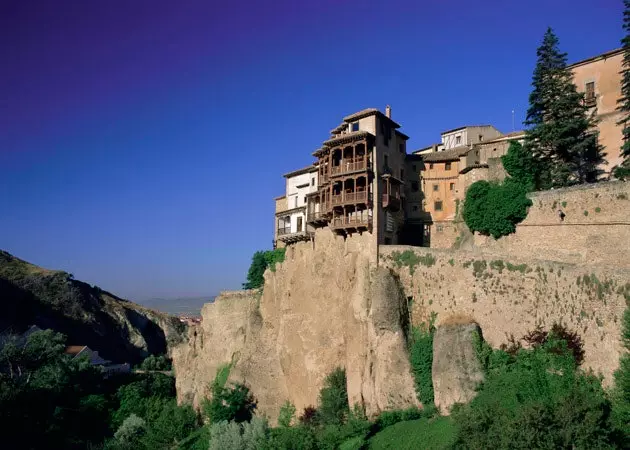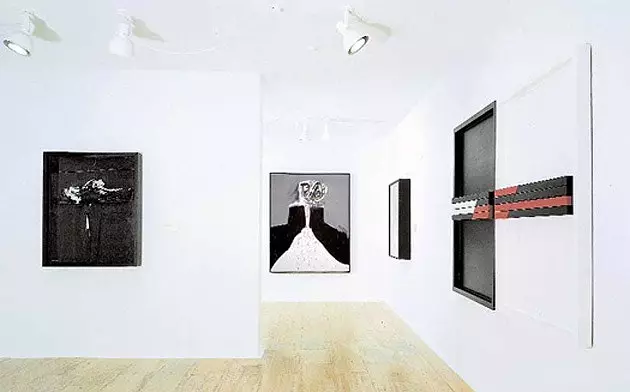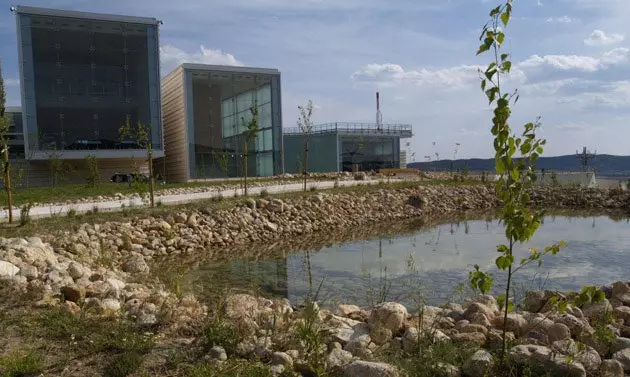
The famous Hanging Houses of Cuenca
By herself, Basin would have its reasons for being classified as abstract: it is located in an impossible enclave, its steep slopes challenge any trained twin, its ancient architecture is quite a feat... Also, can anyone think of a better adjective to describe the figures that nature has sculpted at will in the nearby Enchanted city ?
Basin it had the perfect foundation to become the place of inspiration for new creators. Its presumed invisibility allowed it to be the seed of artists' workshops that worked with absolute tranquility, far from the eyes of censorship. But above all, the influence of two local artists and their studios was crucial, Gerardo Rueda and Gustavo Torner . They welcome the third leg of this bank, Fernando Zóbel, and together they found what until then seemed like a utopia: the Museum of Spanish Abstract Art.
This oasis attracted numerous contemporary colleagues, who felt embraced by an environment that understood them, with places to exhibit, to be inspired and to talk. Antonio Saura or Manolo Millares came to buy a house in the Old Town . The density of artist per square meter rose to unsuspected heights for this humble enclave. Few times in history has a Spanish city amassed as many artists as Cuenca did in the 1960s.
However, it is not this fact that gives the city of La Mancha a remarkable singularity. The funny thing is that abstract art has taken over its icons and does not coexist parallel to the future of routine tourism , but becomes a voluntary protagonist of it. A clear example of this are the Hanging Houses, the image of numerous souvenirs and postcards that, however, inside hold a gratifying surprise.
The most famous of them all, the Casa del Rey, is the seat of said Museum of Abstract Art . Managed since 1980 by the prestigious Juan March Foundation, this space is a frontal clash between the rural nature of its interior design and the works that populate its openings and walls. It is a whole labyrinth, a succession of stairs, small rooms, windows, corridors where you can enjoy your collection. It may be because of its original layout, because of its use of the rooms or because of the views it offers of the Huécar gorge, but it is not necessary to concentrate on its works to have an enriching visit. The collection is a complete demonstration of knowing how to select, giving its fair importance to each school, to each creator in an exercise of weighting and sublime diplomacy. It is only governed by the demands of its own name: it is abstract art created by Spanish artists.

Interior of the Museum of Spanish Abstract Art
Looking for the hackneyed Facebook cover photon, the visitor leaves this area to go down to the San Pablo bridge, from where the typical snapshot is taken. This centuries-old iron footbridge joins the two banks of the deep gorge, leading the visitor to the next obligatory stop: the convent of San Pablo. The formula is repeated successfully. An old building is 'occupied' by the avant-garde transforming it into a beautiful eclectic and dialoguing monster. In its church is the ** Espacio Torner **, a place designed to exhibit the work of one of the pioneer Gustavo Torner in full conventual silence, under its Gothic arches. The crisis has meant that, for now, it is closed with signs of opening in the not too distant future, hopefully.
Antonio Saura's relationship with Cuenca it gives one more twist to establish itself as something deeper and eternal. Here he died 14 years ago and it was the City Council itself that allowed him to choose a building as the headquarters of the Foundation and his legacy. The artist himself chose a mansion from the 18th century, Casa Zabala, where several private and personal collections are now housed. The visit does not disappoint, completing a triptych of prototypical places in Castile (with its chromatic sobriety and architectural variety), with an abstract heart. A new utility that does not creak, that does not seem like a postmodern whim, that pairs harmoniously.
But it would be unfair to say that everything ends here , that Cuenca has been paralyzed with the last throes of this generation. Instead of putting an end to it and leaving its well-known tourist emblems as arguments to spare, it has preferred to continue breaking its ironclad and very aesthetic medieval molds.
Possibly, without them we would not be able to enjoy the science Museum , a center that follows the model of 'occupation' of old buildings, filling houses of the old science Jewry, with a very neat planetarium included. But perhaps the trace is more evident in the young AVE station, called Fernando Zóbel in recognition of the arduous task that he carried out in the city, placing it on the map of the Vanguards of the second half of the 20th century. His design seems to pay homage to it, since the metal plates that cover it could easily have been signed by contemporaries such as Oteiza or Chillida. A perfect entrance door that heralds your treasures.
**The latest example of Cuenca's idyll with the modern is Ars Natura **. This space defines itself as "Interpretation Center of the singularities of the territory of Castilla-La Mancha, its biodiversity and the interaction of man with the environment." Well, let's be honest, unless you are passionate about the subject, your visit is not a 'must'. That yes, alleviating the little interest that can arouse in the common traveler, the primary objective of it is its location and its exterior design. It takes advantage of its location on Cerro Molina, an old viewpoint that offers a great panoramic view of the Old Town, to be structured in the form of large windows, modern balconies from which to better contemplate the city.
The most metaphorical will assure that they are the perfect lenses for those who already know Cuenca, for those who have delved into its streets until they find art. Without a doubt, it is an experience that must be lived.

The sustainable buildings of Ars Natura
